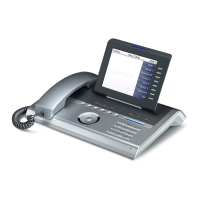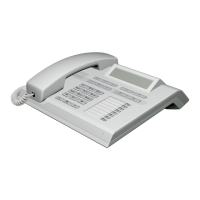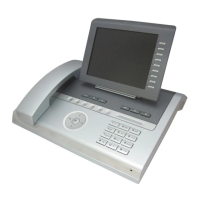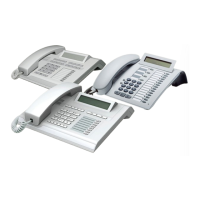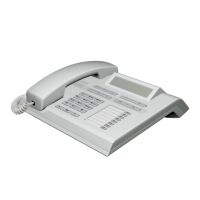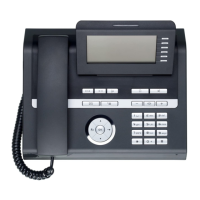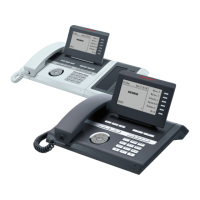administration.fm
A31003-O1010-M100-9-76A9, 05/05/2008
HiPath 8000 - OpenStage Family, Administration Manual
3-141
Administration
Diagnostics
3.17.7.2 View Report
OpenStage phones generate QoS reports using a HiPath specific format, QDC (QoS Data Col-
lection). The reports created for the last 6 sessions, i. e. conversations, can be viewed on the
WBM.
To enable the generation of reports, please ensure that:
• the switch QoS traps to QCU (System > SNMP) is activated (see Section 3.3.8, “SNMP”);
• the conditions for the generation of reports are set adequately (see Section 3.17.7.1, “Con-
ditions and Thresholds for Report Generation”).
For details about QoS reports on HiPath devices, see the HiPath QoS Data Collection V 1.0
Service Manual.
A QoS report contains the following data:
• Start of report period - seconds: NTP time in seconds for the start of the report period.
• Start of report period - fraction of seconds: Additional split seconds to be added to the
seconds for an exact start time.
• End of report period - seconds: NTP time in seconds for the end of the report period.
• End of report period - fraction of seconds: Additional split seconds to be added to the
seconds for an exact end time.
• SNMP specific trap type: The trap type is a 5 bit value calculated from a list of threshold-
exceeding bits. Every time a threshold is exceeded, the associated bit is set, otherwise it
is cleared.
The trace type bits are defined as follows:
• Bit 0: Jitter threshold was exceeded.
• Bit 1: Delay threshold was exceeded.
• Bit 2: Threshold for lost packets was exceeded.
• Bit 3: Threshold for consecutive lost packets was exceeded.
• Bit 4: Threshold for consecutive good packets was exceeded.
• IP address (local): IP address of the local phone.
• Port number (local): RTP receiving port of the local phone.
• IP address (remote): IP address of the remote phone that took part in the session.
• Port number (remote): RTP sending port of the local phone.
• SSRC (receiving): RTP Source Synchronization Identifier of the local phone.
• SSRC (sending): RTP Source Synchronization Identifier of the remote phone.
• Codec: Number of the Payload Type applied in the session; see RFC 3551 (Table 4 and 5).
• Maximum packet size: Maximum size (in ms) of packets received during the report inter-
val.
